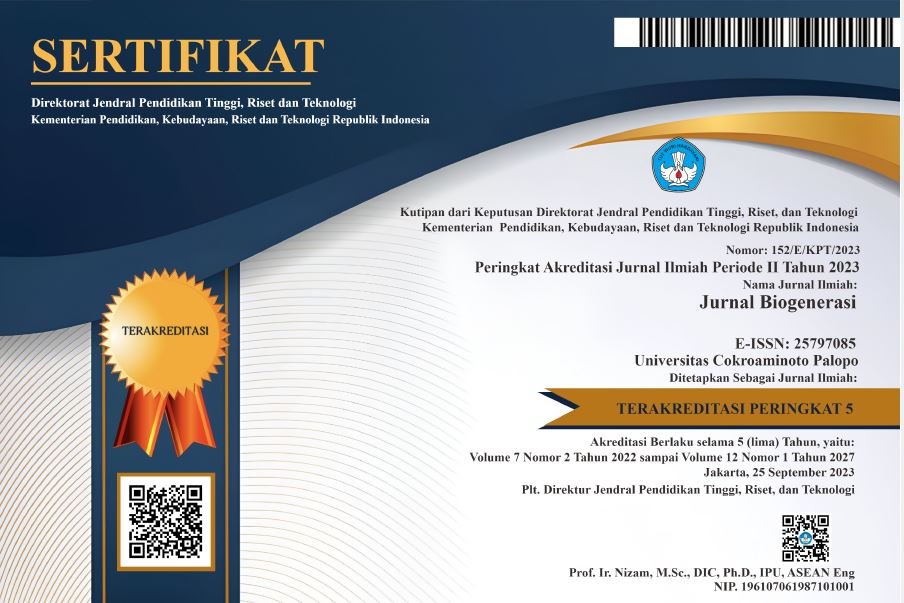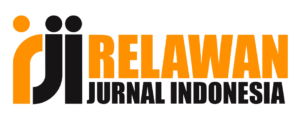Eksplorasi Spesies Rumput Laut dan Pemanfaatan Komoditas Budidaya di Perairan Mamolo
Keywords:
Coastal utilization, Eucheuma cottonii, Eucheuma spinosum, Kampung Mamolo, Kappaphycus alvarezii, SeaweedAbstract
Kampung Mamolo, located in South Nunukan District, North Kalimantan, is one of the key centers for seaweed cultivation in the Indonesia–Malaysia border region. This study aims to explore the seaweed species cultivated by the local community and to examine their morphological characteristics and economic value. A qualitative descriptive method was used, involving field observations, interviews with seaweed farmers, and literature review. The findings identified nine seaweed species from three major divisions: Chlorophyta, Phaeophyta, and Rhodophyta. Among these, three species—Eucheuma cottonii, Eucheuma spinosum, and Kappaphycus alvarezii—are actively cultivated due to their high economic value as sources of carrageenan widely used in food, pharmaceutical, and cosmetic industries. Cultivation is carried out traditionally using the floating-line system, which has proven effective in supporting sustainable production. This research contributes to the documentation of local marine biodiversity and its potential to enhance coastal community livelihoods.
Downloads
References
Asrin (2022). Koran Kaltara: “10 Jenis Rumput Laut Ditemukan di Perairan Mamolo. https://korankaltara.com/rumput-laut-di-nunukan-terkendala-kesuburan-dan-kadar-kering” Diakses dari www.korankaltara.com
Badan Pusat Statistik. (2021). Produksi Perikanan Budidaya Menurut Provinsi. Jakarta: BPS RI.
Bixler, H. J., & Porse, H. (2011). A Decade of Change in the Seaweed Hydrocolloids Industry. Journal of Applied Phycology, 23, 321–335. https://doi.org/10.1007/s10811-010-9529-3
Dahuri, R. (2011). Keanekaragaman Hayati Laut: Aset Pembangunan Berkelanjutan Indonesia. Jakarta: Penerbit Djambatan.
Gikawanti, D., & Aca, A. (2021). Potensi Laut Indonesia dalam Meningkatkan Ketahanan Pangan Nasional. Jurnal Kelautan dan Perikanan, 13(2), 123–132.
Hurtado, A. Q., Critchley, A. T., & Trespoey, A. (2006). Kappaphycus ‘cottonii’ Farming. In: Critchley, A. T. (Ed.), Seaweed Resources of the World. ETI Bioinformatic
Kharismawati, W., Sukiman, & Astuti, S. P. (2019). Keanekaragaman jenis makroalga di Pantai Tawun, Kecamatan Sekotong. BioWallacea: Jurnal Ilmiah Ilmu Biologi, 5(2), 98–105. ISSN 2442-2622.
Lumbessy, S. Y., Setyowati, D. N., Mukhlis, A., Lestari, D. P., & Azhar, F. (2020). Komposisi nutrisi dan kandungan pigmen fotosintesis tiga spesies alga merah (Rhodophyta sp.) hasil budidaya. Journal of Marine Research, 9(4), 431–438. https://doi.org/10.14710/jmr.v9i4.28688
Purnayudhanto, R., & Samadi, S. (2024, December). Peran ekosistem terumbu karang dalam mendukung. [Article]. State University of Jakarta. Retrieved from https://www.researchgate.net/publication/386556682
Radiarta, N., Erlania, E., Haryadi, J., & Rosdiana, A. (2016). Analisis pengembangan budidaya rumput laut di Pulau sebatik, Kabupaten nunukan, Kalimantan utara. Jurnal Kebijakan Perikanan Indonesia, 8(1), 29-40.
Ramadhan, R., Mamahit, D. A., Yurianto, M., Widodo, P., Saragih, H. J. R., & Suwarno, P. (2023). Strategi pengembangan hutan mangrove dan restorasi terumbu karang dalam pengelolaan wisata bahari guna mendukung keamanan maritim di Banyuwangi, Indonesia. Nusantara: Jurnal Ilmu Pengetahuan Sosial, 10(11), 4914–4927.
Santoso, J. (2004). Rumput Laut: Budidaya, Pengolahan dan Pemasaran. Jakarta: Penebar Swadaya.
Sari, N., Bakhtiar, & Azmin, N. (2022). Pemanfaatan rumput laut (Eucheuma cottonii) sebagai bahan dasar masker wajah alami. JUSTER: Jurnal Sains dan Terapan, 1(1), 28–35. p-ISSN 2809-7661, e-ISSN 2809-7750.
Sunarpi, Ghazali, M., Nikmatullah, A., Lim, P.-E., & Phang, S.-M. (2013). Diversity and distribution of natural populations of Eucheuma J. Agardh and Kappaphycus Doty in Nusa Tenggara Barat, Indonesia. Malaysian Journal of Science, 32(Special Issue on Science and Culture in Society), 151–164.
Syafitri, T., Hafiludin, & Chandra, A. B. (2022). Pemanfaatan ekstrak rumput laut (Eucheuma cottonii) dari perairan Sumenep sebagai antioksidan. Jurnal Kelautan, 15(2), 160–166. https://doi.org/10.21107/jk.v15i2.14905
Trono, G. C. (1999). Diversity of the Seaweed Flora of the Philippines and Its Utilization. Hydrobiologia, 398/399, 1–6.
Yong, Y. S., Yong, W. T. L., & Anton, A. (2014). Analysis of Seaweed Consumption in Malaysia. Journal of Applied Phycology, 26(4), 2127–2134.
Yusvantika, N., Kusdarwati, R., & Sulmartiwi, L. (2022). Uji aktivitas antibakteri ekstrak kasar alga merah Eucheuma spinosum terhadap pertumbuhan bakteri Staphylococcus epidermidis. JMCS (Journal of Marine and Coastal Science), 11(3), 111–118.
Downloads
Published
How to Cite
Issue
Section
License
Copyright (c) 2025 Hikmah Zikriyani, Murni Efriani Hutasoit

This work is licensed under a Creative Commons Attribution 4.0 International License.
In submitting the manuscript to the journal, the authors certify that:
- They are authorized by their co-authors to enter into these arrangements.
- The work described has not been formally published before, except in the form of an abstract or as part of a published lecture, review, thesis, or overlay journal.
- That it is not under consideration for publication elsewhere,
- That its publication has been approved by all the author(s) and by the responsible authorities – tacitly or explicitly – of the institutes where the work has been carried out.
- They secure the right to reproduce any material that has already been published or copyrighted elsewhere.
- They agree to the following license and copyright agreement.
License and Copyright Agreement
Authors who publish with this journal agree to the following terms:
- Authors retain copyright and grant the journal right of first publication with the work simultaneously licensed under Creative Commons Attribution License (CC BY 4.0) that allows others to share the work with an acknowledgment of the work's authorship and initial publication in this journal.
- Authors are able to enter into separate, additional contractual arrangements for the non-exclusive distribution of the journal's published version of the work (e.g., post it to an institutional repository or publish it in a book), with an acknowledgment of its initial publication in this journal.
- Authors are permitted and encouraged to post their work online (e.g., in institutional repositories or on their website) prior to and during the submission process, as it can lead to productive exchanges, as well as earlier and greater citation of published work.


.png)

